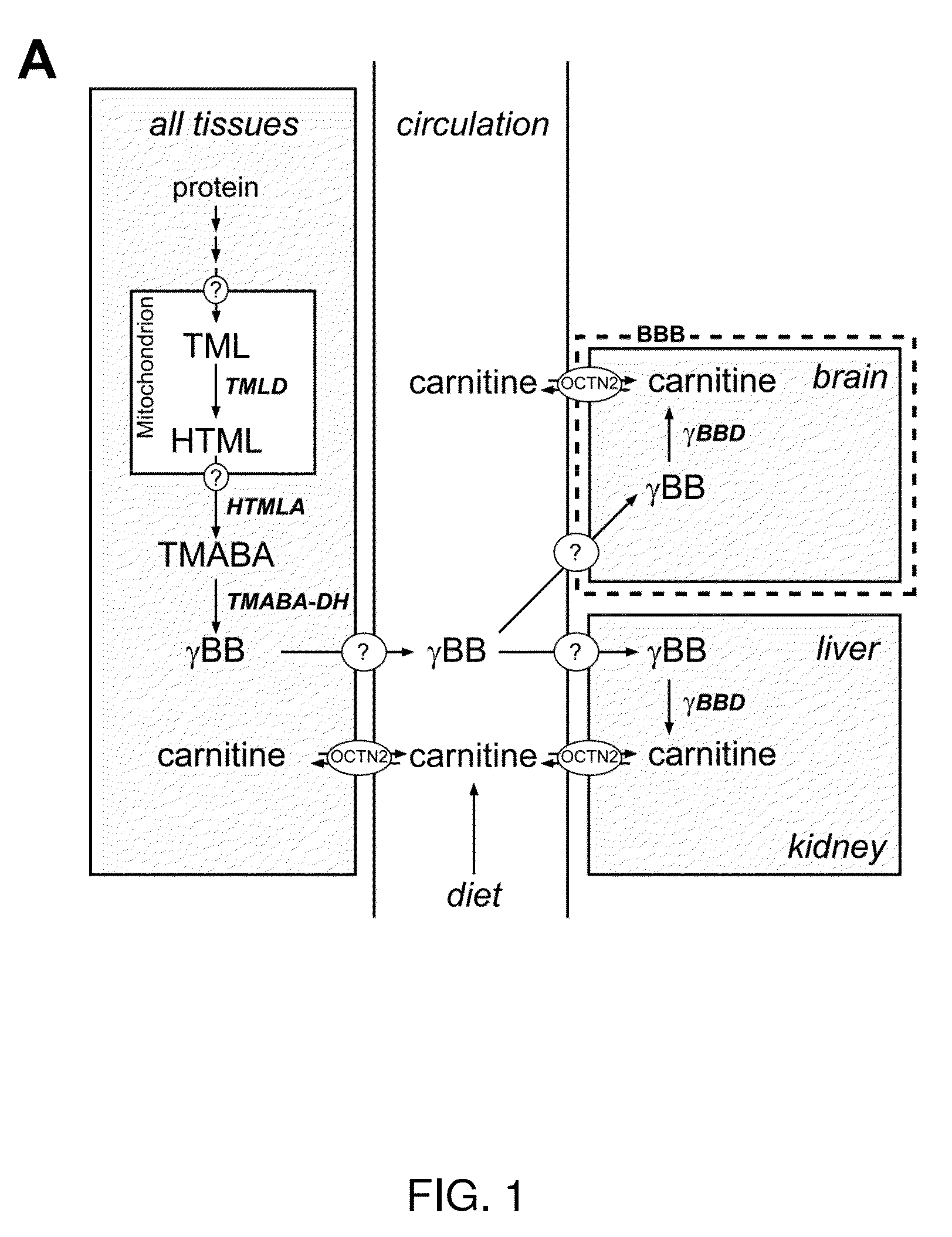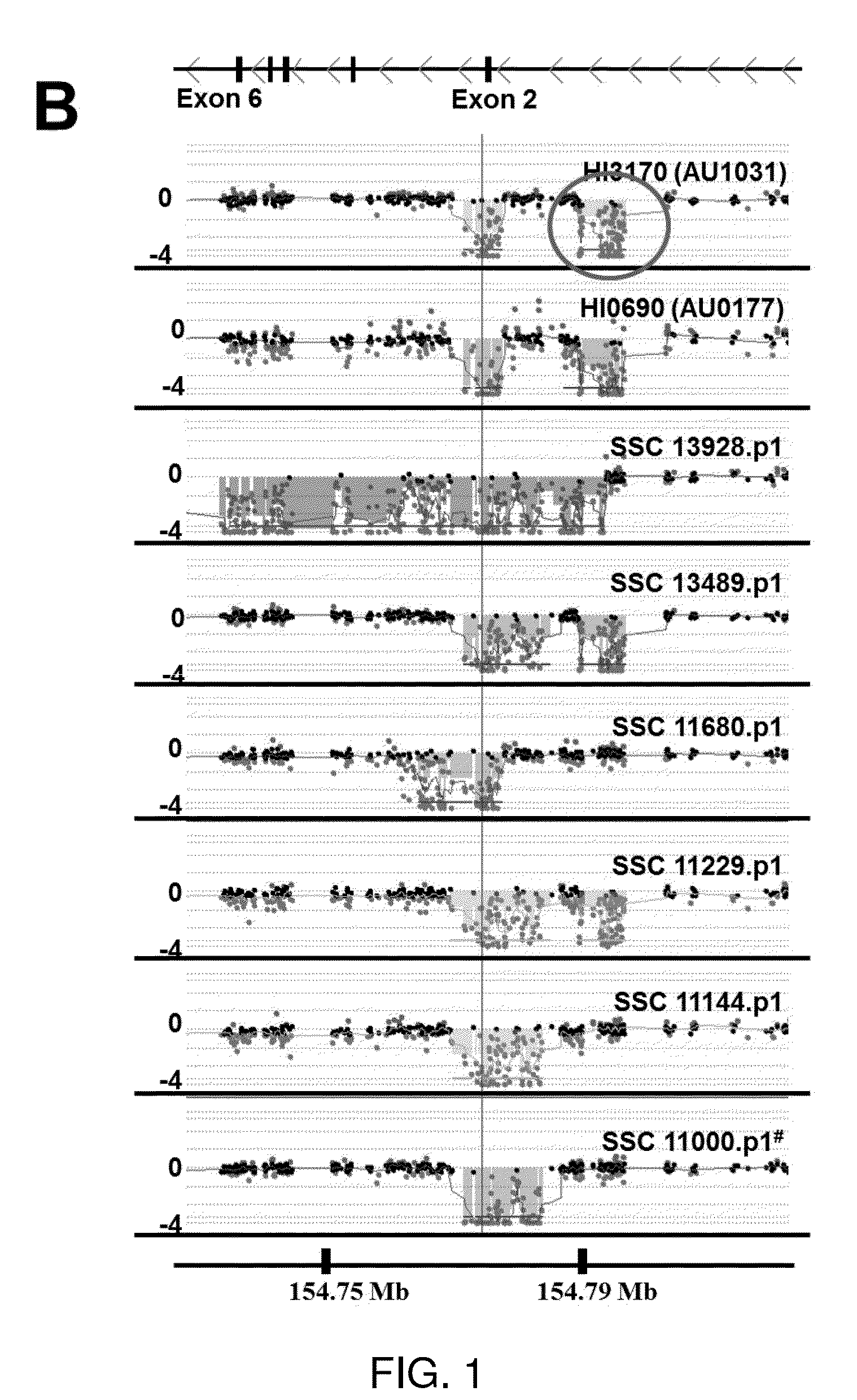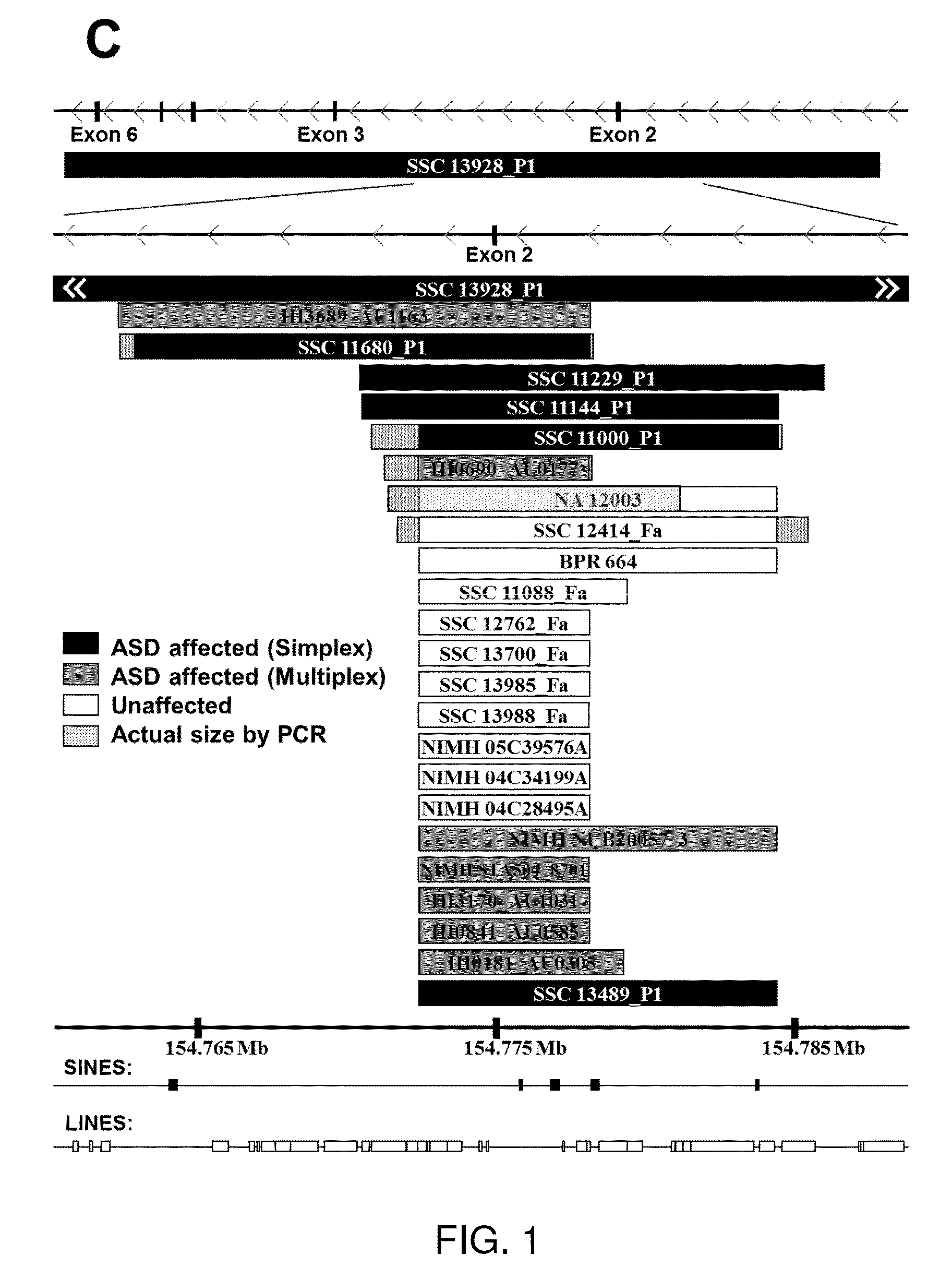Analysis of tmlhe and carnitine biosynthesis for autism diagnosis
a technology of carnitine and tmlhe, applied in the field of medicine, cell biology, molecular biology, public health, can solve problems such as autism through neurodegeneration, and achieve the effect of increasing the probability of carnitine level
- Summary
- Abstract
- Description
- Claims
- Application Information
AI Technical Summary
Benefits of technology
Problems solved by technology
Method used
Image
Examples
example 1
Deletion of TMLHE Exon 2 is Recurrent and is Common in Autistic and Healthy Males
[0190]In addition to the first family found to have deletion of exon 2 of TMLHE, there were many other autism probands and healthy adult males with deletions of exon 2 indicating that this is a relatively common CNV. There is at least one family with the deletion in two brothers with autism from the AGRE collection (family AU 0177). Deletions of exon 2 ranged in size from 5.7 to 15.9 kb except for one deletion of 59.6 kb which deleted exons 2-6 (FIGS. 1B and 1C and Table S1 (see below)). Based on position and size, 14 of 24 deletions were different from all others; there were 10 deletions that were very similar in size. Sequencing of the breakpoints of many deletions showed that almost all junctions occurred in LINEs and S1NEs in the introns flanking exon 2 (Table S2 (see below)) as has been seen in other loci (Boone et al., 2011). These results indicate recurrent deletions with slightly different junct...
example 2
Exon 2 Deletion Results in Loss of TMLD Activity, Absence of TMLD Protein, and Diagnostic Metabolite Abnormalities
[0194]Cultured lymphoblast lines from the numerous exon 2 deletion samples showed low or undetectable TMLD enzyme activity. Results from family AU 0177 were complex with the two affected brothers with deletion of exon 2 having very low or undetectable enzyme activity, but the unaffected mother and half brother showing low activity but higher than the affected brothers (FIGS. 3A, 3B, and Table S4). The mother is a compound heterozygote with deletion of exon 2 on one X chromosome and the R241Q mutation on the other; she transmitted the deletion to her two affected sons and the R241Q mutation to their unaffected half-brother. Western blot analysis did not reveal any immunoreactive material in deletion lymphoblast lines in contrast to detection of the expected band in control cell lines (FIGS. 3B and 3C). Enzyme activity results for multiple autism cell lines and controls de...
example 3
[0198]TMLHE Exon 2 Deletion is Significantly More Frequent in Multiplex Autism
[0199]It was important to determine whether there was a significant association of TMLHE deficiency with autism. Because deletion of exon 2 was more common than any other mutations detectable by genomic sequencing, and because it was associated with loss of enzyme activity, it was expedient to analyze a large series of autism cases and controls for exon 2 deletion. A PCR assay was designed with primers slightly outside the boundaries of exon 2 to give a product of ˜500 bp in normal males but no product for males with deletion of exon 2. If a sample failed to give a PCR product, the presence or absence of deletion was then confirmed using custom array CGH with densely spaced oligonucleotides interrogating the TMLHE region (FIG. 1B). For PCR analysis, we focused entirely on males, because the assay would not reliably detect the deletion in heterozygous females.
[0200]Using the PCR assay, the inventors tested ...
PUM
| Property | Measurement | Unit |
|---|---|---|
| temperatures | aaaaa | aaaaa |
| temperatures | aaaaa | aaaaa |
| temperatures | aaaaa | aaaaa |
Abstract
Description
Claims
Application Information
 Login to View More
Login to View More - R&D
- Intellectual Property
- Life Sciences
- Materials
- Tech Scout
- Unparalleled Data Quality
- Higher Quality Content
- 60% Fewer Hallucinations
Browse by: Latest US Patents, China's latest patents, Technical Efficacy Thesaurus, Application Domain, Technology Topic, Popular Technical Reports.
© 2025 PatSnap. All rights reserved.Legal|Privacy policy|Modern Slavery Act Transparency Statement|Sitemap|About US| Contact US: help@patsnap.com



